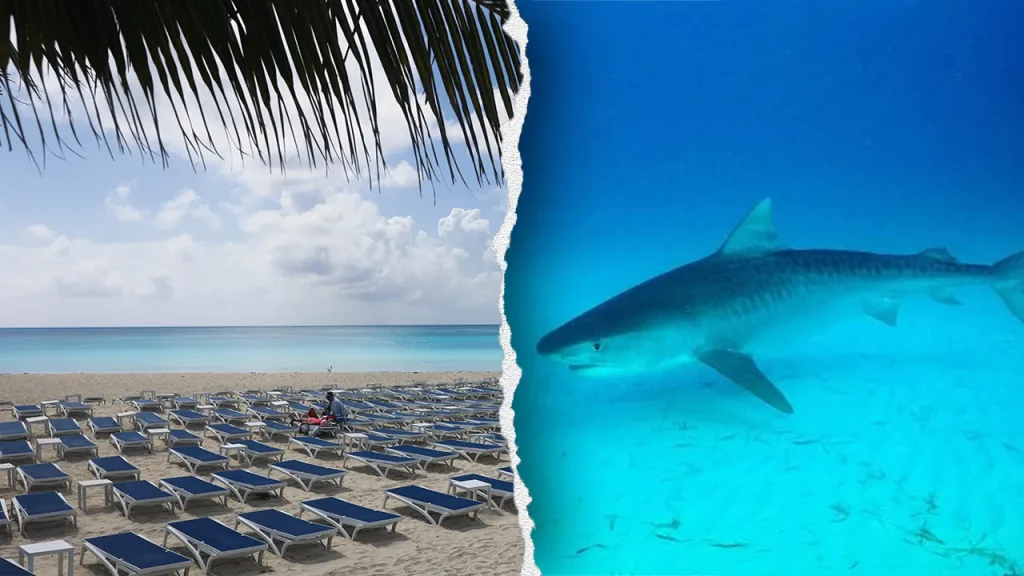A tragic incident occurred in Turks and Caicos when a Canadian tourist sustained severe injuries after being attacked by a shark while snorkeling. The 55-year-old woman attempted to take a selfie with the creature, resulting in both of her hands being amputated. The attack has prompted local officials to issue safety warnings about interacting with marine life and has raised concerns regarding the safety of snorkelers in popular tourist areas.
| Article Subheadings |
|---|
| 1) Overview of the Incident |
| 2) Immediate Response and Medical Attention |
| 3) Shark Attack Investigation and Species Information |
| 4) Public Safety Advisories Issued |
| 5) Context: Shark Attacks in the Region |
Overview of the Incident
On February 7, a devastating incident took place off the coast of Providenciales in the Turks and Caicos Islands. Officials reported that a 55-year-old Canadian tourist was snorkeling when she was attacked by a shark estimated to be around six feet long. The tourist had been attempting to take photographs with the shark when the encounter turned perilous. The specifics regarding the species of shark involved remain unconfirmed, leading to ongoing discussions among marine biology experts. This incident has highlighted not only the dangers of snorkeling but also the importance of understanding marine life behavior.
Immediate Response and Medical Attention
In the immediate aftermath of the attack, the woman’s husband acted quickly, plunging into the water in a desperate effort to rescue her. Witnesses reported that other bystanders also rushed to help, attempting to pull the woman from the water and staunch the bleeding until professional help arrived. Authorities informed that she was swiftly transported to a local hospital for initial treatment. However, due to the severity of her injuries, she was subsequently airlifted off the island for more specialized medical care. Tragically, the woman’s injuries necessitated the amputation of both of her hands. This shocking outcome has raised serious concerns about safety practices for both tourists and locals when engaging in water sports.
Shark Attack Investigation and Species Information
Following the shark attack, the Turks and Caicos Department of Environment and Coastal Resources (DECR) launched an investigation to gather details regarding the incident. Preliminary reports confirmed that the woman was snorkeling in the shallows, engaging with the shark shortly before the attack. While the shark has been described as approximately six feet in length, officials currently have not confirmed its species, which complicates the situation further.
“The DECR encourages individuals to respect marine life and understand the potential dangers,”
a spokesman stated. This investigation aims to prevent future incidents by understanding the circumstances surrounding the attack.
Public Safety Advisories Issued
In response to this tragic incident, officials have elevated public safety advisories. The DECR emphasized the importance of being aware of one’s surroundings in marine environments and respecting the local wildlife. Guidelines provided to the public include swimming only in designated areas, avoiding murky waters, and refraining from swimming alone. The authorities have also instructed that any interaction with marine animals should be approached with caution. In light of this incident, beach access was temporarily restricted, although the areas were reopened shortly after. The overall message from the officials is clear: increased awareness and precaution can significantly enhance safety for all ocean-goers.
Context: Shark Attacks in the Region
This incident represents a rare but critical occurrence in the region’s tourism narrative. Between 2021 and 2025, only four shark attacks were reported in the Turks and Caicos, and notably, all previous victims survived. However, this latest incident is particularly alarming as it resulted in severe injuries. Highlighting the broader context of marine safety, there are calls for increased education for tourists about interactions with wildlife. In fact, there were concurrent reports of another shark attack in nearby waters on the same day, where two American tourists were injured while visiting a popular beach resort in the Bahamas.
| No. | Key Points |
|---|---|
| 1 | A Canadian tourist had both hands amputated after a shark attack while snorkeling. |
| 2 | The incident occurred on February 7 in Providenciales, Turks and Caicos. |
| 3 | Immediate efforts by bystanders and her husband helped stabilize the victim before medical assistance arrived. |
| 4 | The DECR initiated an investigation to identify the species of the shark and study the attack circumstances. |
| 5 | Public safety advisories have been issued to enhance awareness about marine interactions. |
Summary
The shark attack on a Canadian tourist in Turks and Caicos serves as a sobering reminder of the potential dangers associated with marine wildlife. As local authorities review the specifics of the incident, there is a renewed focus on public safety and adherence to guidelines when engaging with nature. The amputation of both hands demonstrates the severe outcomes of such interactions and emphasizes the need for awareness and respect for marine life. The community’s response and subsequent actions can help in preventing future tragedies.
Frequently Asked Questions
Question: What should snorkelers do to stay safe?
Snorkelers should always be aware of their surroundings, refrain from swimming alone, and avoid murky waters. It is also crucial to follow local advisories and respect marine animals by not attempting to feed or touch them.
Question: What are the guidelines for reporting a shark sighting or attack?
If a shark sighting or attack occurs, it is important to report it to local authorities immediately. They will assess the situation and take necessary safety measures to protect others in the area.
Question: How can tourists minimize their risk while enjoying aquatic activities?
To minimize risk, tourists should swim in designated areas, keep a safe distance from marine life, and stay informed about local safety recommendations. Wearing brightly colored swim gear can also help enhance visibility in the water.


